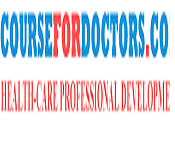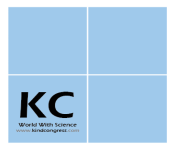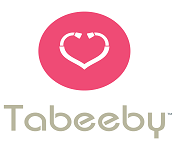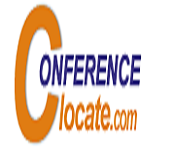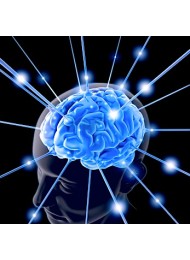Theme: Navigating to the Future Advancements in Brain Therapeutics.
Brain Disorders 2022
The 3rd World Congress on Advances in Brain Injury, Disorders and Therapeutics would be a stage for interconnecting National and Global specialists, scientists and chiefs both from the scholarly world and industry from everywhere throughout the world to trade their insight, skill and research developments in the field of Brain issue, Neurology and Therapeutics. These Brain Issue and Neurology meeting is a station for trading thought and learning on Cerebrum damage, brain tumor, brain Issue, Neurology, and Neuroscience, Neuroimaging, and Neurological issue. This conference includes the investigation identified with the conclusion and treatment of infection or failing of the cerebrum, muscles, fringe nerves, spinal cord, and autonomic sensory system. The target of the gathering is to keep up and create science and related research at a universal level. To accomplish this, it is vital to carry into a significant field of neurology with the novel investigations, which can spare a huge number of lives we Navigating the Future Advancements in Brain Therapeutics.
Track 1. Alzheimer’s Disease
Alzheimer's disease may be a progressive disorder that causes brain cells to waste away (degenerate) and die. Alzheimer's disease is that the commonest explanation for dementia endless decline in thinking, behavioral and social skills that disrupts an individual's ability to function independently.
Track 2. Traumatic Brain Injury
Traumatic brain injury (TBI) is sudden damage that occur to the brain caused by a blow or jolt to the highest. Main causes include car or motorcycle crashes, falls, sports injuries, and assaults. Injuries can range from slight concussions to severe permanent brain damage. While treatment for mild TBI may include rest and drugs, severe TBI may require medical care and life-saving surgery. Those who survive a brain injury can face lasting effects in their physical and mental abilities also as emotions and personality. Most people that suffer moderate to severe TBI will need rehabilitation to recover and relearn skills.
Track 3.Brain Disorders and Neuroimmuno Disorders
Neurological Disorders are going to be disarranged of the neural framework happens when the cerebrum is harmed by wellbeing conditions, damage, harm or illness. Neurology meeting offers knowledge on new investigates on medicine turmoil. The 3 Neurotransmitters noradrenaline, dopamine, and serotonin are associated with both mind and body capacities The target of a neurology meeting is to understand the Origin, Genesis, Causes and Source of different sorts of neural issue. The reasons for mind issue: tumor, Stroke, Brain's electrical pathway, Brain injury, infectious agent contamination and Genesis of Brain.
Track 4.Brain Tumors and Surgery
Brain therapeutics gathering gives data on new looks into brain surgery and Brain Tumors. Mind tumors are the second-driving reason for death. Females under 20 years old, guys under 40 years old, All in all, there's a not the maximum amount as a One for every penny shot of build up a threatening CNS or cerebrum tumor through the span of one's lifetime. Among individuals younger than 20, 4.5 for every 100,000 people are going to be determined to possess a harmful mind tumor. This very rate ascends to 57 for each 100,000 people after age 75.
Track 5.Vagus Nerve Stimulation
The wandering nerve (means vagus nerve) is that the longest cranial nerve runs from the bottom of the brain to the chest and abdomen, with one branch running on either side of the body. These seizures are thought to be caused by overactive signaling within the brain. A wire from the device is wrapped around the left wandering nerve .Once activated; the device sends an electrical signal from the vagus to the brain. VNS medical aid in patients with Dravet syndrome.
Track 6. Depression
Depression is a common mental disorder it may be described as feelings of sadness, loss, or anger that interfere with a person’s everyday activities. Worldwide, more than 264 million people of all ages suffer from depression. Most of women are affected by depression than men. Depression can also lead to suicide.
Track 7.Addiction & Brain Disorders
Addiction might be a sophisticated condition, an encephalopathy that's manifested by compulsive substance use despite harmful consequence. Individuals with addiction (severe substance use disorder) have associate intense focus in employing a bound substance(s), like alcohol or medicine, to the aim that it takes over their life. They keep using alcohol or a drug even after they know it can cause issues. Nonetheless, sorts of effective treatments are obtainable and folk will endure addiction and lead traditional, productive lives.
People with a substance use disorder have distorted thinking, behavior and body functions. Changes within the brain’s wiring are what cause individuals to possess intense cravings for the drug and build it exhausting to stop victimization the drug. Brain imaging studies show changes within the areas of the brain that relate to judgment, learning, memory, deciding and behavior management.
Track 8.Human Brain Mapping
Neuroscientists endeavor to understand however the brain develops and controls our perception of the earth and our interactions with it. Animal models change investigations of the genetic, molecular, cellular, circuit-level and neurophysiological mechanisms underlying these processes. . During this issue, Nature Neuroscience presents a series of commissioned items that discuss recent progress in many non-invasive techniques and put forth conceptual frameworks under which we can examine neuroimaging data to deepen our understanding of those rich data sets. These advances might facilitate connect findings from varied species and attain tons of complete image of the brain's structure and performance.
Track 9.Brain Stroke and Transient Ischemic Attack (TIA)
Transient ischemic attack (TIA) is also known as a minestrone. It occurs when part of the brain experiences a temporary blockage of blood flow. This causes stroke like symptoms which can be resolved within 24 hours. Unlike a stroke, a Transient ischemic attack on its own doesn’t cause permanent disabilities. One of the most common drugs used to prevent ministroke is warfarin, an anticoagulant medication.
The main difference between the stroke and Transient ischemic attack is Strokes , don't go away so quickly , That means some part of your brain goes without oxygen, and the longer that lasts, the more damage happens. While ministroke last for few minutes and does not leaves any symptoms.
Track10. Epilepsy and Other Seizure Disorders
Epilepsy is that the fourth most common neurological disorder and affects people of all ages. Epilepsy is described as “a common brain condition that causes repeated seizures.” Epilepsy is a non-communicable chronic disorder of the brain. When a person is having two are more unprovoked seizure they are consider to be having the epilepsy
A seizure can be defined as an abnormal, disorderly discharging of the brain's nerve cells, resulting in a temporary disturbance of motor, sensory, or mental function.
Track 11.Molecular Brain Research
Molecular Brain analysis could even be a special section of Brain analysis that provides a medium for the prompt publication of studies of molecular mechanisms neuronal synaptic and connected processes that underlie the structure and performance of the brain. Emphasis is placed on the biology of fundamental neural operations relevant to the integrative actions of nervous systems.
Types of papers,
1. Research Reports reporting results of original fundamental research in any branch within the brain sciences. It's expected that these papers are going to be published about six months after acceptance.
2. Short Communications reporting on research which has progressed to the stage when it's considered that the results should be made known quickly to other workers within the sector.
3. Interactive Reports are papers describing the first, top quality, elementary analysis in any space of neurobiology that are considered deserve priority publication.
Track 12.Neuropharmacology and Case reports
Neuropharmacology it’s a branch of science that investigates how medicines have an impression on cell function within the sensory system and also the neural parts through that they have an impression on behavior. There are two main branches of neuropharmacology: behavioral and sub-atomic. Behavioral neuropharmacology focuses on the examination of how medication reliance and habit influence the human brain.
Sub-tracks:
- Molecular neuropharmacology
- Clinical pharmacology
- Behavioral and addiction neuropharmacology
- Immunopharmacology and material medical
- Future aspects of neuropharmacology
Track 13.Neuro Anesthesia and Care
Neuron anesthesia is one in all the specialties under neurosurgery that have contributed staggeringly over the years to neuroscience nonetheless it remained non-accredited and supported. Neuroanesthetic management is completely different from general anesthesia as a result of it will have a significant impact on the brain and spinal cord through the management of blood flow, blood pressure and energy consumption of those organs. Somatosensory Evoked Potential Monitoring (SEP Monitoring) and Motor Evoked potential difference Monitoring (MEP monitoring) are used as one of the vital technique for treatment in spinal cord and brain surgeries.
Sub-tracks:
- Sleep disturbance
- Neurasthenic exhaustion
- Psychasthenia
Track 14.Neuropsychiatry and Behavioral science
Neuropsychiatry is a branch of medicine that deals with mental disorders attributable diseases of the nervous system. It preceded the present disciplines of psychiatry and neurology. Neurologists have centered objectively on organic nervous system pathology, particularly of the brain, whereas psychiatrists have laid claim to illnesses of the mind. Major Neuropsychiatric Conditions embody the following: Addictions, Childhood and development, eating disorders, Degenerative diseases, Mood disorders, Neurotic disorders, mental illness & Sleep disorders.
Track15. Fetal consciousness and memory
The cortex, the epicenter of human consciousness, starts to form by six months gestation. Neuroscientists suspect from studies that even inside the womb, in the late stages of maternity, the fetus becomes familiar with the sound of its mother's voice and may already be learning language
Fetal memory is very important for the development of memory in humans. Several factors will impair craniate memory and its functions, primarily maternal actions. There are multiple techniques offered not only to demonstrate the existence fetal memory but to measure it.. Fetal memory is vulnerable to certain diseases so much so that exposure can permanently damage the development of the fetus and even terminate the pregnancy by aborting the fetus. Maternal nutrition and the avoidance of drugs, alcohol and different substances throughout all 9 months of pregnancy (especially the critical period when the nervous system is developing) is important to the development of the fetus and its memory systems. The use of certain substances can entail long-term permanent effects on the fetus that can carry on throughout their lifespan.
Track 16.Neurophysiology, Neuroimaging and Radiology
Neurology occasion clarify regarding the Neuroradiology and Neuroimaging. Neuroimaging is that the visual capability of the cerebrum and sensory system. Through neuroimaging finding of flow status and movement of neurodegenerative, mental, intracranial illness is conceivable. Neuroimaging incorporates different procedures, for example, PET, MRI, and CT for analysis. Biomarker is any substance that is brought into living beings as a pointer for recognizing, screening, diagnosing, and observing organ work. Utilization of biomarkers is increasing step by step in drugs improvement.
Track 17.Brain Stimulation and Devices
Deep brain stimulation (DBS) is a neurosurgical procedure involving the placement of a medical device called a neurostimulator (sometimes referred to as a 'brain pacemaker'), which sends electrical impulses, through implanted electrodes, to specific targets in the brain (brain nuclei) for the treatment of movement disorders, including Parkinson's disease, essential tremor, and dystonia. While its underlying principles and mechanisms are not fully understood, DBS directly changes brain activity in a controlled manner.
Deep brain stimulation device involves implanting electrodes within certain areas of your brain or the electrical impulses can affect certain cells and chemicals within the brain. The amount of stimulation in deep brain stimulation is controlled by a pacemaker-like device placed under the skin in your upper chest.
Track 18.Coma vs. Brain Death
Individual in a state of coma is considered as alive, no matter how severe or prolonged. There is a chance to get back into the normal life for the coma patients as the patient is in reversible unconscious condition but brain continuously gives electrical impulse signal to rest of the body. In case of brain death patients, they are in irreversible unconscious condition i.e. complete and irreversible cessation. In case of vegetative state coma, the patient has recovered brain stem function but not higher cognitive abilities. If the vegetative state continues for more than one month then it is considered as persistent vegetative state which normally leads to brain death. Only in rare cases, patient with persistent vegetative coma state can recover full mental awareness.
Sub-tracks:
- Locked-in syndrome
- Clinical death vs. Brain death
- Persistent vegetative state
- Brain dysfunction
- Brain hemorrhage
- Neural Tube Defect (NTD)
Track 19. Organ Donation and Complications:
For the advancement in modern science and technology, organ donation is the greatest achievement by which an organ failure patient may get new life. Organ donors are of two types as living related donor and living non-related donor like brain death patient and cadaveric donor. After brain death, donated organs are kept viable by using ventilator or other supporting mechanisms until it will be transplanted. In case of brain death, patient can donate most of the organs. Critical care management of a potential donor patient is very crucial to maximize the number and the quality of the transplanted organs.
Sub-tracks:
- Living donor
- Cadaveric donor
- Organ collection & preservation
- Miscellaneous neurological disorders
Market analysis:
Brain Therapeutics specializes in in-licensing and commercializing approved products from Central Nervous System Sector to address the unmet medical needs of patients with Brain Disorders, such as Mood and Anxiety diseases, Schizophrenia and Bipolar Disorder, Parkinson’s and Epilepsy, as well as Pain. The team has more than 20 years’ experience within Brain Disorders and commercial capabilities acquired through years of experience in multinational Pharmacy. In addition, the team has a strong network among CNS key opinion leaders and all these years are dedicated to Brain Disorders.
Brain Therapeutics 2022 is dedicated to the development and commercialization of critical care products with a focus on neurology, cancer care and unique prescription products using innovative, patented or proprietary formulations of previously approved active pharmaceutical ingredients By using previously approved drugs with substantial safety and efficacy data, it seeks to reduce the risks associated with pharmaceutical product development and regulatory requirements.
This report contains:
- An analysis of the trends in drug discovery and development for the neurodegenerative disorders
- An overview of the global neurological disorders treatment market which provides definitions and a structure for the industry
- Provides details for the treatment markets of specific diseases such as Alzheimer's, amyotrophic lateral sclerosis, multiple sclerosis, Parkinson's disease, muscular dystrophy, and other, rarer neurological disorders
- Offers a detailed analysis of patents as well as important technological developments
- A review of government regulations
- Profiles the most important companies in the industry today.
Conference Highlights
- Neurology
- Central Nervous System
- Neurosurgery
- Neuroimmunology
- Neurorehabilitation
- Neuropsychiatry
- Neurochemistry
- Neuro Cardiology & Strokes
- Neuroendocrinology
- Neuro-Ophthalmology
- Neuro-Oncology
- Neurotoxicity of Drug Abuse
- Neuromuscular and Spinal Disorders
- Depression, Anxiety & Schizophrenia
- Alzheimer’s, Dementia and Epilepsy
- Progress in Neurology
- Mental Health and Substance Abuse
- Meditation and Yoga
- Neurological Disorders, Autism Spectrum Disorder, and Bipolar Disorders
Who should attend?
- All the Stake Holders (both Academia & Industry) of the Sector
- Researchers & Innovators
- Experts Looking for Collaborative Work
- Product Developers
- Solution Providers
- Sales & Marketing Professionals
- Associations, Societies, & Professional Bodies
- Funding Agencies & Fund Raisers
- Management Bodies
- Decision Makers
Why to attend?
Be the first to showcase your research, innovation and brand to gain competitive advantages. Meet your target audience and explore your product and services.
- To Meet Experts
- Learning In a New Space
- New Tips & Tactics
- Certification
- Global Networking
- Rebuild New Customer Base
- Brand Establishment
Target Audience:
- Industry - 21%
- Student - 17%
- Academia - 42%
- Government - 11%
- Others - 9%
Societies Associated with Neurological Research
- Mental health Association in Maryland
- Society for Mental Health Research
- American Academy of Child and Adolescent Psychiatry
- Australian Clinical Psychology Association
- American Association of Neurological Surgeons
- World Psychiatry Association
- American Psychiatric Association
- European Psychiatric Association
Members Associated with Neurological Research
- Neurologists
- Psychologists
- Neurosurgeons
- Neuro Researchers
- Students
- Neuro Engineers
Top Neuroscience Universities in Australia
- The University of Melbourne
- Monash University
- La Trobe University
- The Australian National University
- The University of Sydney
- The University of Western Australia (UWA)
- Swinburne University of Technology
- Macquarie University
- University of New England (UNE)
Top Neurology Universities in Globe
- Leiden University
- Keele University
- Plymouth University
- University of Toledo
- University of Sheffield
- University of Birmingham
Conference Highlights
- Alzheimer’s Disease
- Brain and Neuroimmuno Disorders
- Traumatic Brain Injury
- Brain Tumors and Surgery
- Vagus nerve stimulation
- Depression
- Addiction & Brain Disorders
- Human Brain Mapping
- Brain Stroke and Transient Ischemic Attack (TIA)
- Epilepsy and Other Seizure Disorders
- Molecular Brain Research
- Neuropharmacology and Case reports
- Neuro anesthesia and Care
- Neuropsychiatry and Behavioral science
- Fetal consciousness and memory
- Neurophysiology, Neuroimaging and Radiology
- Brain Stimulation and Devices
- Coma Vs. Brain Death
- Organ Donation and Complications
To share your views and research, please click here to register for the Conference.
To Collaborate Scientific Professionals around the World
| Conference Date | May 26-27, 2022 | ||
| Sponsors & Exhibitors |
|
||
| Speaker Opportunity Closed | |||
| Poster Opportunity Closed | Click Here to View | ||




